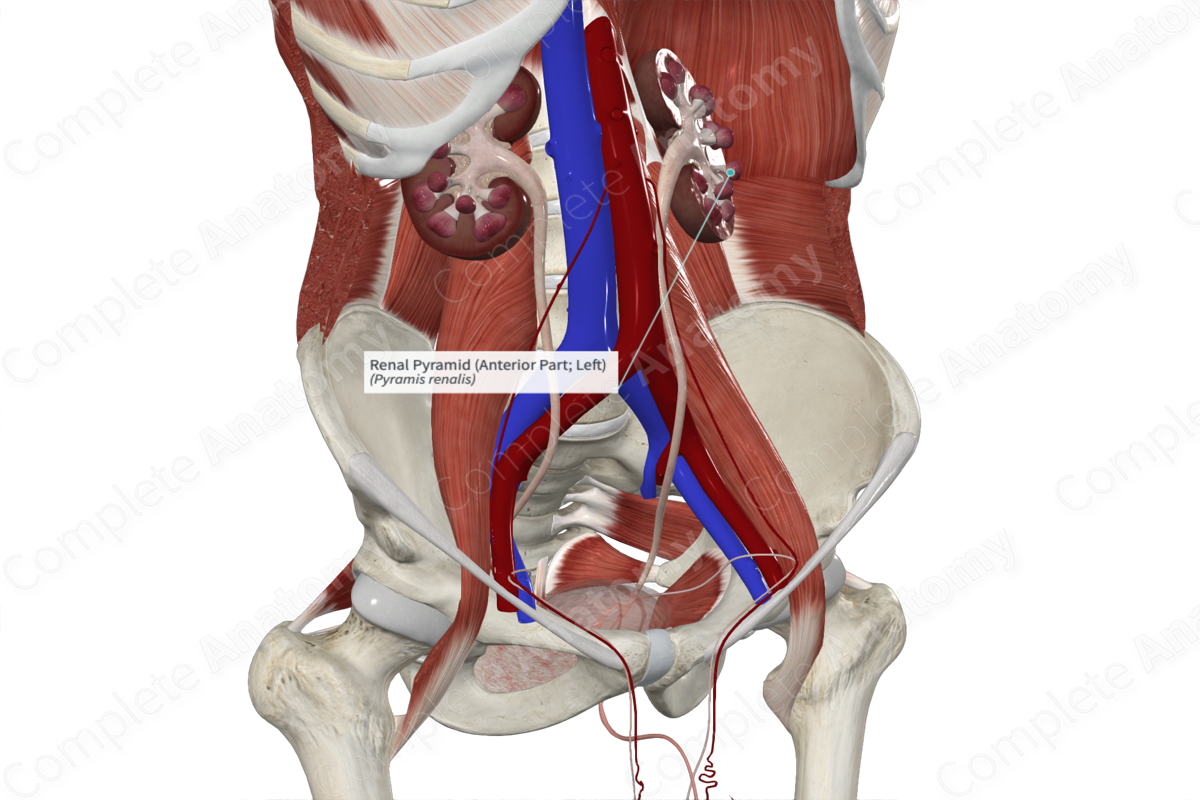
Structure/Morphology
The renal pyramids are triangular and consist of numerous collecting ducts that condense at the apex of each pyramid called the renal papilla.
Related parts of the anatomy
Key Features/Anatomical Relations
The renal pyramids make up a majority of the renal medulla. A renal column separates adjacent pyramids.
Function
The collecting ducts within the renal pyramids direct urine towards the renal papilla where each pyramid is surrounded by single minor calix. Urine is then transported to a major calix, the renal pelvis and out of the kidney.
Learn more about this topic from other Elsevier products


